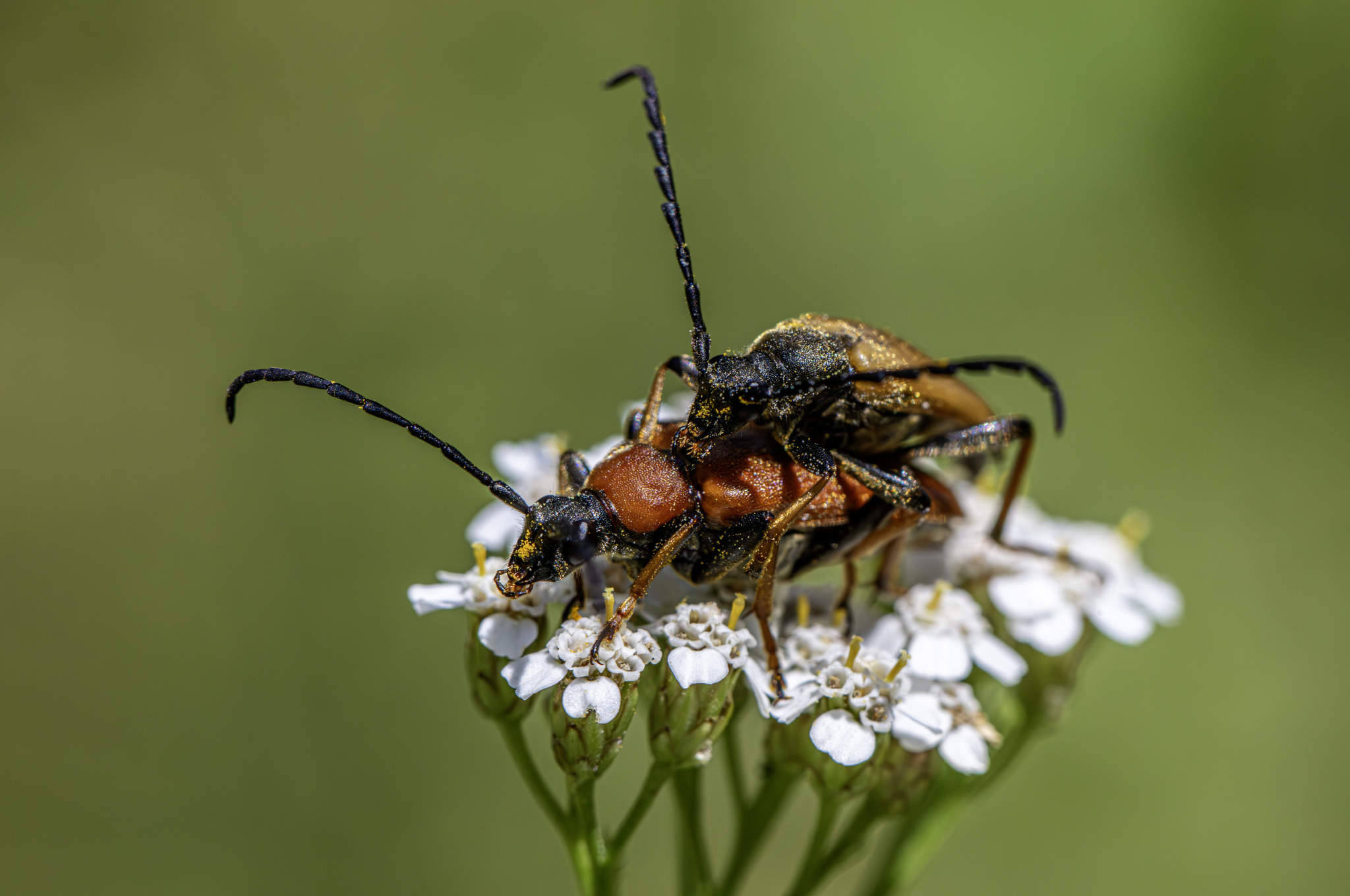The Red-Brown Longhorn Beetle (Stictoleptura rubra) is a visually striking beetle known for its distinct coloration and long antennae. Here are some key details about this beetle species:
Appearance
- Size: The Red-Brown Longhorn Beetle typically measures 12-20 mm (0.5-0.8 inches) in length.
- Coloration: As the name suggests, the beetle has a red-brown coloration. Males are generally darker, often appearing more reddish-brown, while females are lighter, with more pronounced red tones.
- Antennae: Both males and females possess long, segmented antennae, which can be nearly as long as their bodies or longer. These are often a key identifying feature.
- Body Shape: They have an elongated body typical of longhorn beetles, with a cylindrical shape and strong mandibles.
Habitat
- Range: Stictoleptura rubra is found throughout Europe and parts of Asia. Its range extends from Scandinavia to the Mediterranean and eastwards to Siberia.
- Environment: This beetle prefers wooded areas, especially those with plenty of decaying or dead wood, as this is where the larvae develop. They can be found in deciduous and mixed forests, gardens, and parks.
Behavior
- Feeding: Adult beetles feed on nectar, pollen, and sometimes on the bark of trees. They are commonly seen on flowers, especially umbellifers like hogweed and cow parsley, where they play a role in pollination.
- Larvae: The larvae are wood-borers, feeding on decaying or dead wood from a variety of tree species, including oak, beech, and pine. They play an essential role in breaking down and recycling dead wood in forest ecosystems.
Life Cycle
- Eggs: Females lay their eggs in cracks or crevices of dead or decaying wood.
- Larvae: The larvae develop inside the wood, where they create tunnels as they feed. This stage can last from 2 to 3 years, depending on environmental conditions.
- Pupation: After completing their larval stage, they pupate within the wood. The pupal stage lasts a few weeks, after which the adult beetle emerges.
- Adults: Adults are most commonly seen from June to August, with their activity peaking in mid-summer. They are relatively short-lived, with a lifespan of a few weeks to a couple of months.
Adaptations
- Camouflage: The red-brown coloration of these beetles helps them blend into their woody environment, providing some protection from predators.
- Strong Mandibles: The mandibles of the larvae are well-adapted for boring into wood, allowing them to create extensive tunnels as they feed and develop.
Ecological Role
- Decomposition: As wood-borers, the larvae of Stictoleptura rubra play a crucial role in decomposing dead wood and recycling nutrients back into the ecosystem. This process helps maintain the health and balance of forest ecosystems.
- Pollination: Adults contribute to pollination by feeding on flowers, thereby aiding the reproduction of various plant species.
Conservation
- Status: The Red-Brown Longhorn Beetle is not currently considered endangered. However, its populations can be affected by the loss of suitable habitats, particularly the availability of dead wood in forests.
- Conservation Efforts: Preserving natural forests and maintaining dead wood habitats are essential for the conservation of this species. Sustainable forestry practices and creating deadwood habitats in managed forests and parks can support their populations.
Interesting Facts
- Sexual Dimorphism: There is notable sexual dimorphism in this species, with females generally being larger and having brighter red coloration compared to males.
- Attraction to Light: Like many beetles, Red-Brown Longhorn Beetles are attracted to light and can often be found near outdoor lights at night.
The Red-Brown Longhorn Beetle (Stictoleptura rubra) is an important species in forest ecosystems, contributing to both decomposition and pollination. Conservation efforts focused on preserving their natural habitats are crucial for their continued survival.
Visited 86 times, 26 visit(s) today
Views: 159
Subscribe to the newsletter:
